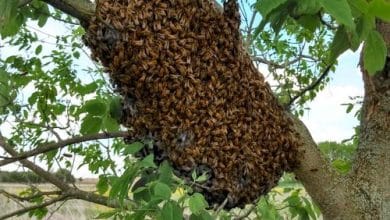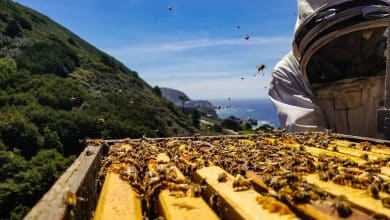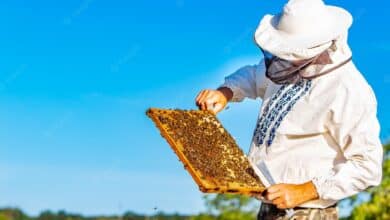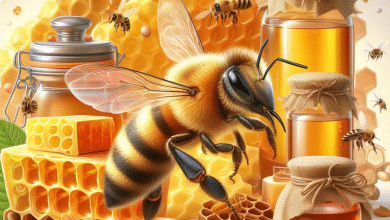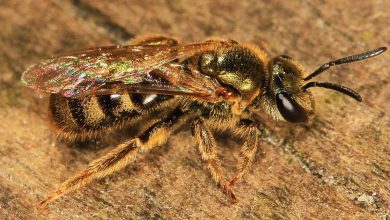How the Carniolan Honey Bee Thrives in Different Environments

The Carniolan honey bee is a remarkable species known for its adaptability and resilience in various environments. With their exceptional traits and ability to thrive in different conditions, Carniolans have become a favorite among beekeepers worldwide.
Characterized by their hardworking nature, Carniolan honey bees have evolved to adapt to different foraging conditions, allowing them to survive and flourish even in less than ideal environments. These bees possess exceptional pest resistance, reducing the need for chemical interventions, which aligns with the growing emphasis on sustainable beekeeping practices.
Carniolan honey bees originated in regions with long hot summers and cool winters, making them well-suited for areas with similar climatic conditions. They have developed unique behavioral and physical adaptations that enable them to thrive in their natural habitat.
In addition to their adaptability, Carniolan honey bees are known for their increased honey production. They are efficient foragers, capable of finding and collecting nectar from a wide range of flowering plants. With their ability to rapidly expand their hives when food sources are abundant, Carniolans have become an asset for beekeepers seeking optimal honey production.
Furthermore, Carniolan honey bees demonstrate improved resistance to Varroa mites and diseases, which are significant threats to bee colonies worldwide. This resilience contributes to the long-term survival and health of the species, making them a valuable addition to any beekeeping operation.
While Carniolan honey bees offer numerous benefits, conservation efforts are crucial to their continued survival. Programs and initiatives focused on protecting and preserving their habitat, as well as addressing threats and obstacles, are vital in ensuring the future of these remarkable bees.
Overall, the Carniolan honey bee plays a significant role in sustainable beekeeping. Their adaptability, honey production capabilities, and resistance to pests make them a valuable asset for beekeepers worldwide. Looking ahead, it is essential to continue conservation efforts and ensure the viability of the Carniolan honey bee population for the years to come.
Overview of the Carniolan Honey Bee
The Carniolan honey bee, also known as Carnica bee or Apis mellifera carnica, is a highly favored bee species among beekeepers for its exceptional traits and adaptability. This remarkable bee is not just your average honey bee; it possesses unique characteristics that set it apart from other races.
Carniolan honey bees are excellent foragers, known for their vigorous activity in early spring. Unlike some other bee races, they quickly venture out of the hive in search of abundant foraging resources. Equipped with a remarkable elongated tongue, they can access nectar from hard-to-reach flowers and clover, making them efficient gatherers of nectar and pollen.
This breed exhibits a high level of productivity, with an impressive ability to build brood and honeycomb early in the season, ensuring a strong and thriving bee colony. They are diligent workers and are known for their strong work ethic, which greatly contributes to their reputation as exceptional honey producers.
Furthermore, the Carniolan honey bee demonstrates remarkable adaptability and resilience in different environments. They are capable of thriving in regions with long hot summers and cool winters, making them well-suited for areas with similar climatic conditions.
Not only are Carniolan honey bees outstanding honey producers, but they also exhibit improved resistance to pests and diseases, particularly Varroa mites. Their inherent resistance reduces the need for chemical interventions, aligning with the growing emphasis on sustainable and natural beekeeping practices.
Overall, the Carniolan honey bee stands out for its adaptability, productivity, and resilience. It is a cherished breed among beekeepers worldwide, offering numerous benefits and contributing to the success of sustainable beekeeping operations.
Importance of Adaptation in Different Environments
Adaptation is a crucial factor for the survival and success of any species, and the Carniolan honey bee is no exception. The ability to adapt to different environments allows the Carniolan honey bee to thrive in various geographical locations, making it a sought-after bee species for beekeepers worldwide.
One of the main advantages of the Carniolan honey bee’s adaptability is its ability to withstand and flourish in different climates and temperature ranges. This adaptability is especially important as beekeepers often relocate their colonies to maximize honey production or pollination services. Whether it is a region with hot summers or cool winters, the Carniolan honey bee can successfully adapt and maintain a strong and productive colony.
The Carniolan honey bee’s adaptability also extends to its foraging patterns and food source preferences. These bees have a remarkable sense of orientation and can quickly adapt to new foraging territories, ensuring efficient utilization of available resources. Their longer tongues allow them to access nectar from various types of flowers, including those with deep corollas, giving them an advantage in areas with diverse floral landscapes.
Moreover, the adaptability of the Carniolan honey bee plays a significant role in reducing the need for chemical interventions in beekeeping practices. Their improved resistance to pests and diseases, such as the Varroa mite, reduces the reliance on chemical treatments, aligning with the growing movement towards sustainable and natural beekeeping methods.
In a world where environmental conditions are constantly changing, the adaptability of the Carniolan honey bee is of utmost importance. By being able to thrive in different environments, these bees contribute to the resilience and sustainability of beekeeping operations, ensuring the continued provision of vital pollination services and honey production.
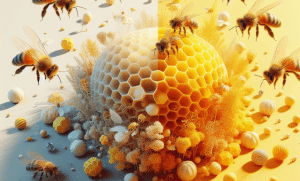
Natural Habitat and Characteristics
The Carniolan honey bee, also known as the Carniolan bee or Apis mellifera carnica, is a subspecies of honey bee that is native to the alpine regions of central and southeastern Europe. It thrives in areas with moderate climates and abundant floral resources.
Carniolan honey bees have several distinguishing physical traits and behavioral characteristics. They have black to dark brown colored bodies, with lighter bands on their abdomen. This unique color pattern makes them easily recognizable among other honey bee species.
One of the most remarkable characteristics of the Carniolan honey bee is its gentleness and non-aggressive nature. They are known to be calm and less prone to sting, making them suitable for beekeepers, especially beginners. This gentle temperament allows for easier hive management and less risk of beekeepers getting stung during hive inspections or honey harvesting.
Another important characteristic of the Carniolan honey bee is its superior sense of orientation. They have excellent homing instincts, which enable them to navigate and return to their hive even in unfamiliar territories. This adaptability and navigational prowess make them less likely to drift and ensures a higher overall colony success rate.
Furthermore, the Carniolan honey bee has a relatively low usage of propolis, a sticky resinous substance that bees use to seal gaps and protect their hives. This trait reduces the effort required for hive maintenance and management.
Overall, the natural habitat and characteristics of the Carniolan honey bee contribute to their suitability for beekeeping and their ability to thrive in different environments. Their gentle nature, strong homing instincts, and low propolis usage make them a preferred choice for beekeepers seeking a resilient and manageable bee species.
Native Range and Distribution
The Carniolan honey bee, also known as the Carniolan bee or Apis mellifera carnica, is native to the alpine regions of central and southeastern Europe. Its natural range spans from the eastern Alps to the Balkan Peninsula. This subspecies has adapted and thrived in various countries, including Slovenia, Austria, Croatia, Hungary, and parts of Romania.
Carniolan honey bees have also been introduced and successfully naturalized in other regions around the world. They have been widely distributed and established in North America, South America, Australia, and New Zealand. This global distribution is a testament to their adaptability and ability to thrive in diverse environments.
Beekeeping associations and breeders in these regions have actively worked to maintain and promote the Carniolan honey bee’s population. They have imported queen bees and established breeding programs to ensure the purity and genetic diversity of this subspecies.
The Carniolan honey bee’s reputation as a resilient and manageable breed has contributed to its popularity among beekeepers worldwide. Its gentle nature, strong homing instincts, and ability to adapt to different climates and floral resources have made it a preferred choice for beekeeping enthusiasts.
However, while the Carniolan honey bee has successfully spread globally, it is essential to prioritize conservation efforts to preserve its genetic diversity and natural adaptations. Continued conservation programs and collaboration among beekeepers and researchers are crucial to safeguarding the Carniolan honey bee‘s future and its contributions to sustainable beekeeping practices.
Physical Traits and Behavioral Adaptations
The Carniolan honey bee, known scientifically as Apis mellifera carnica, possesses several distinctive physical traits and exhibits behavioral adaptations that contribute to its ability to thrive in different environments. These characteristics make it a preferred choice among beekeepers worldwide.
Physical Traits: The Carniolan honey bee has a robust and well-developed body, with a relatively small and compact size compared to other honey bee subspecies. Its coloring varies, ranging from light gray, brown, or black to a mix of gray and brown. This coloration helps it blend in with its natural surroundings in alpine regions.
Behavioral Adaptations: One key behavioral adaptation of Carniolan honey bees is their strong homing instinct. They have an excellent sense of orientation and can navigate long distances when foraging for nectar and pollen. This adaptation allows for efficient foraging and enables them to return to their hive with precision.
Carniolan honey bees also exhibit a remarkable ability to adapt to changes in their environment. They can quickly adjust their foraging patterns and timings based on the availability of food sources. For example, they forage earlier in the morning and later in the evening, as well as on cooler and wetter days, to maximize their collection.
Furthermore, these bees are known for their gentleness and non-aggressive behavior, making them ideal for beekeepers and for maintaining hives in populated areas. They are less prone to robbing from neighboring hives and display a lower drifting rate, reducing the risk of inter-hive conflicts.
Overall, the physical traits and behavioral adaptations of the Carniolan honey bee allow it to adapt and thrive in diverse environments. These traits, such as their strong homing instinct and ability to adjust foraging patterns, contribute to their popularity among beekeepers and their effectiveness as pollinators in different climates and habitats.
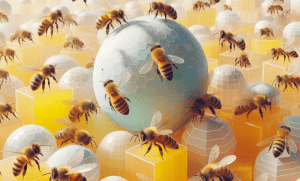
Environmental Factors and Adaptations
The Carniolan honey bee, also known as Apis mellifera carnica, has a remarkable ability to adapt to different environmental factors, allowing it to thrive in various habitats. This adaptability is crucial for the survival and success of bee colonies in ever-changing conditions.
One of the environmental factors that the Carniolan honey bee can adapt to is climate and temperature. This subspecies has developed a tolerance for both hot summers and cold winters. It can withstand the extremes of temperature that are often experienced in its native range, which includes temperate Central European regions from the Alps to the Carpathian Mountains. This adaptability enables the Carniolan honey bee to continue its essential role as a pollinator, even in challenging weather conditions.
Another adaptation of the Carniolan honey bee is its foraging pattern and ability to adapt to different food sources. This subspecies can adjust its foraging timings and patterns based on the availability of nectar and pollen. It is known to forage earlier in the morning and later in the evening, as well as on cooler and wetter days when other bees might not be as active. This ability helps the Carniolan honey bee maximize its collection of food resources and ensures its survival even when resources are scarce.
Furthermore, the Carniolan honey bee displays specific behavioral adaptations, such as strong homing instincts and non-aggressive behavior. Its homing instincts allow it to navigate long distances when foraging and return to its hive with precision. Its non-aggressive behavior makes it an ideal choice for beekeepers and for maintaining hives in populated areas, as it is less prone to robbing from neighboring hives and inter-hive conflicts.
In conclusion, the Carniolan honey bee‘s ability to adapt to different environmental factors, such as climate, foraging patterns, and behavior, contributes to its success as a honey bee subspecies. Its adaptability allows it to thrive even in challenging conditions and makes it a preferred choice among beekeepers and pollinators in diverse ecosystems.
Climate and Temperature Tolerance
The Carniolan honey bee exhibits an impressive ability to tolerate a wide range of climates and temperatures, making it well-suited to various environments. This subspecies has evolved in temperate regions of Central Europe, including the Alps and Carpathian Mountains, where it experiences both hot summers and cold winters.
The Carniolan honey bee has developed adaptations that allow it to thrive in these challenging weather conditions. It has the ability to regulate its internal temperature and cluster together in the hive to maintain warmth during cold winters. This clustering behavior helps the bees conserve energy and survive low temperatures, allowing the colony to overwinter successfully.
Similarly, the Carniolan honey bee can also withstand the heat of hot summers. The bees have a higher heat resistance compared to other honey bee subspecies, enabling them to forage and work effectively even in high temperatures. They also have a tolerance for drought conditions, which is advantageous in regions where water availability may be limited.
The ability of the Carniolan honey bee to adapt to different climates and temperature extremes makes it a resilient pollinator. It can continue to perform its vital role in pollinating plants and crops, even in challenging environmental conditions. This adaptability also helps beekeepers in managing their colonies, as the bees are better equipped to withstand fluctuations in weather patterns.
In summary, the Carniolan honey bee’s climate and temperature tolerance allows it to thrive in a wide range of environments. Its adaptations for withstanding both hot summers and cold winters make it a resilient subspecies that is well-suited for diverse climates. By adapting to different temperature conditions, the Carniolan honey bee continues to play a crucial role in pollination and beekeeping practices.
Foraging Patterns and Food Source Adaptations
The Carniolan honey bee has developed remarkable foraging patterns and food source adaptations that contribute to its success in different environments. These bees are known for their excellent navigation skills and efficient foraging habits, allowing them to gather nectar and pollen effectively.
One key adaptation of Carniolan honey bees is their ability to forage in cooler and wetter conditions compared to other honey bee subspecies. They can venture out to collect nectar and pollen even on colder days, which gives them an advantage in areas with unpredictable weather patterns. This flexibility in foraging behavior enables Carniolan honey bees to have a head start in the early spring when resources may be limited.
Another important adaptation is their ability to collect nectar and pollen from a wide range of floral sources. Carniolan honey bees are known to be generalist foragers, meaning they can obtain food from various plant species. This adaptability allows them to thrive in diverse environments where the availability of floral resources may vary. They can effectively utilize the nectar and pollen from different plants, ensuring the survival and productivity of their colony.
Furthermore, Carniolan honey bees have a strong preference for local plant species, displaying a strong floral fidelity. They have developed long-standing relationships with the flora in their specific habitat, which contributes to their success as pollinators. This behavior enhances the pollination of native plants and increases the diversity of plant species in their ecosystems.
In summary, the Carniolan honey bee demonstrates remarkable foraging patterns and food source adaptations. Their ability to forage in cooler temperatures, their flexibility in utilizing various floral resources, and their strong floral fidelity contribute to their efficiency as pollinators. These adaptations allow Carniolan honey bees to play a crucial role in maintaining the balance of ecosystems and sustaining beekeeping practices.
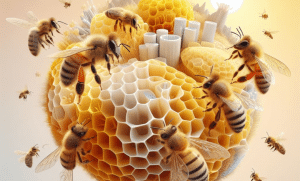
Benefits of the Carniolan Honey Bee
The Carniolan honey bee, also known as the Carnica bee, carries numerous benefits for beekeepers and the ecosystem. This subspecies of honey bee exhibits behavioral characteristics that make it a favorite among beekeepers. One notable benefit is the rapid buildup of its population. After over-wintering, Carniolan honey bees quickly increase brood rearing when fresh nectar and pollen become available. This fast population growth ensures a strong and productive colony.
Beekeepers also appreciate the calm nature of Carniolan honey bees. These bees are known to be less aggressive compared to other subspecies, making them easier to work with and handle. Additionally, their ability to over-winter well in cold climates is a significant advantage for beekeepers in regions with harsh winters.
Another benefit of the Carniolan honey bee is its production of less propolis. Propolis is a resinous substance that bees use to seal and reinforce their hives. While propolis has its benefits, excessive propolis can be difficult for beekeepers to manage. The Carniolan honey bee’s reduced propolis production helps minimize the need for frequent hive manipulations.
Furthermore, Carniolan honey bees have longer tongues, allowing them to access flowers with deeper corollas. This adaptation enables them to gather nectar and pollen from a broader range of floral sources, maximizing their foraging efficiency. Additionally, their good sense of orientation and decreased drifting behavior ensure that they return directly to their hive, reducing the chances of losing workers.
In conclusion, the Carniolan honey bee offers several benefits to beekeepers. Its rapid population growth, calm nature, ability to over-winter in cold climates, reduced propolis production, and efficient foraging capabilities make it a valuable addition to any apiary. These advantages contribute to the overall success and productivity of beekeeping operations.
Enhanced Honey Production
The Carniolan honey bee, also known as the Carnica bee, thrives in different environments and offers numerous benefits to beekeepers. One significant advantage of this subspecies is its enhanced honey production.
Carniolan honey bees are known for their rapid population growth and efficient foraging capabilities. After over-wintering, the bees quickly increase brood rearing when fresh nectar and pollen become available. This fast population growth ensures a strong and productive colony, resulting in increased honey production.
Furthermore, Carniolan honey bees have longer tongues, allowing them to access flowers with deeper corollas. This adaptation enables them to gather nectar from a broader range of floral sources, maximizing their foraging efficiency. As a result, they can collect larger amounts of nectar and produce more honey compared to other subspecies.
In addition to their foraging capabilities, the calm nature of Carniolan honey bees makes them easier to work with and handle during honey extraction. Beekeepers can manage the colonies without disruption, minimizing stress for the bees and ensuring the preservation of honey quality.
Overall, the enhanced honey production of Carniolan honey bees makes them highly valuable for beekeepers. Their rapid population growth, efficient foraging abilities, and calm nature contribute to higher honey yields. By incorporating Carniolan honey bees into their apiaries, beekeepers can enjoy increased honey production and a more successful beekeeping operation.
Improved Resistance to Varroa Mites and Diseases
The Carniolan honey bee has gained recognition for its exceptional ability to resist and combat the devastating effects of Varroa mites and diseases, making it a valuable asset for beekeepers.
One of the most significant advantages of the Carniolan honey bee is its enhanced resistance to Varroa mites. These parasitic mites are a major threat to honey bee colonies worldwide, causing significant damage and often leading to colony collapse. However, Carniolan honey bees have developed behaviors and traits that allow them to effectively mitigate the impact of Varroa mites.
Carniolan honey bees display strong grooming behavior, which involves removing mites from their bodies or other bees in the colony. This behavior helps to control the mite population and prevent the spread of diseases associated with these parasites. Additionally, the bees have shorter development cycles compared to some other subspecies, which reduces the amount of time the mites have to reproduce and multiply.
Furthermore, Carniolan honey bees have shown an increased resistance to certain diseases, such as European foulbrood and American foulbrood. These diseases can be highly destructive to honey bee colonies, causing severe bee mortality and economic losses for beekeepers. The ability of Carniolan honey bees to resist these diseases is believed to be due to their genetic traits, behavioral adaptations, and enhanced immune responses.
By incorporating Carniolan honey bees into their apiaries, beekeepers can benefit from the improved resistance to Varroa mites and diseases. This resilience helps to maintain the health and productivity of honey bee colonies, reducing the need for chemical treatments and promoting sustainable beekeeping practices. The increased resistance of Carniolan honey bees contributes to the overall welfare and survival of honey bee populations, securing their vital role in pollination and ecosystem health.
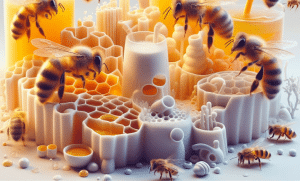
Conservation Efforts and Challenges
Conservation efforts to protect honey bees, including the Carniolan honey bee, are essential to ensure their survival and maintain their crucial role in ecosystems and food systems. Several initiatives and programs have been implemented to address the decline of honey bee populations and mitigate the challenges they face.
One key conservation effort is reducing pesticide usage and promoting alternatives to harmful chemicals. Pesticides, particularly neonicotinoids, have been linked to the decline of honey bee populations and their negative impact on bee health. By advocating for pesticide reduction and encouraging the use of organic and bee-friendly farming practices, beekeepers and conservation organizations aim to create a safer environment for honey bees to thrive.
Additionally, habitat conservation plays a vital role in supporting honey bee populations. Creating and preserving bee-friendly habitats, such as wildflower meadows and pollinator gardens, provides essential sources of food for honey bees. These efforts help mitigate the loss of natural forage caused by agricultural intensification and urbanization.
Educational programs and public outreach are crucial in raising awareness about the importance of honey bees and their conservation. By educating the public about the value of honey bees for pollination and food production, it fosters a greater understanding of their significance and encourages individuals to take action to protect them.
However, conserving honey bees also comes with its challenges. One of the main obstacles is the spread of diseases and pests, such as Varroa mites. These parasites can decimate honey bee colonies if not properly managed. Beekeepers and researchers continuously work on developing effective strategies to control and treat these pests to ensure the survival of honey bee populations.
Furthermore, habitat loss and fragmentation pose a significant threat to honey bees, including the Carniolan honey bee. The conversion of natural habitats into agricultural and urban landscapes reduces the availability of suitable foraging areas and nesting sites for honey bees. Conservation efforts are needed to preserve and restore these habitats to provide a sustainable environment for honey bees.
In conclusion, conservation efforts for honey bees, including the Carniolan honey bee, are crucial for their long-term survival. By reducing pesticide usage, preserving habitats, and raising awareness, we can protect honey bees and ensure their continued contribution to pollination and ecosystem health. However, challenges such as disease management and habitat loss must be addressed to create a more sustainable future for honey bee populations.
Conservation Programs and Initiatives
Several conservation programs and initiatives have been implemented to protect the Carniolan honey bee and ensure its long-term survival. These initiatives aim to address the challenges faced by honey bees and create a more sustainable environment for their colonies to thrive.
One notable organization dedicated to honey bee conservation is The Honeybee Conservancy. This organization focuses on educating the public about bees’ importance, conducting research, creating bee-friendly habitats, and advocating for policy changes to protect bees. Through their efforts, they aim to raise awareness about the Carniolan honey bee and other native bee species and promote their conservation.
Another organization, The Bee Girl Organization, works tirelessly to inspire communities to conserve bees, flowers, and food. Through educational programs, workshops, and community engagement, they aim to create a bee-friendly culture that supports the health and well-being of honey bees, including the Carniolan honey bee. They also collaborate with farmers to promote sustainable farming practices that benefit bee populations.
Additionally, many local beekeeping associations and clubs offer programs and initiatives specific to the conservation of honey bees. These organizations provide education and training to beekeepers, promote sustainable beekeeping practices, and raise awareness about the importance of the Carniolan honey bee in local ecosystems.
Government agencies and research institutions also play a crucial role in honey bee conservation. They conduct research on bee health, develop strategies to combat pests and diseases, and provide resources and support to beekeepers.
Overall, these conservation programs and initiatives play a vital role in ensuring the survival of the Carniolan honey bee and other bee species. By raising awareness, promoting education, and implementing sustainable practices, these organizations and individuals are actively working towards a future where honey bees can thrive.
Threats and Obstacles to Survival
Although the Carniolan honey bee has adapted well to various environments, it still faces several threats and obstacles to its survival. These challenges can impact the health and productivity of Carniolan bee colonies.
One of the primary threats to the Carniolan honey bee is the presence of Varroa mites. These parasitic mites attach themselves to the bees and feed on their hemolymph, weakening the bees and making them more susceptible to diseases. Varroa mites have been a significant factor in honey bee colony losses worldwide, including the Carniolan honey bees. Beekeepers must take proactive measures to control and manage Varroa mite infestations to ensure the survival of their colonies.
Pesticide use also poses a considerable threat to the Carniolan honey bees. The exposure to pesticides, including insecticides and herbicides, can weaken bees’ immune systems, impair their foraging ability, and lead to colony decline. Beekeepers and farmers must adopt sustainable farming practices that minimize pesticide use to protect the Carniolan honey bee and other pollinators.
Loss of habitat is another obstacle to the survival of Carniolan honey bees. Urbanization, deforestation, and the conversion of natural landscapes into agricultural land have reduced the availability of suitable forage and nesting sites for bees. Creating and preserving bee-friendly habitats is crucial to ensure that Carniolan honey bees have access to diverse and abundant food sources.
Climate change is an ongoing threat that affects the Carniolan honey bee and other bee species. The changing climate patterns can disrupt the availability of nectar and pollen, alter flowering times, and create unpredictable weather conditions that challenge bee foraging and colony development.
In summary, the Carniolan honey bee faces threats from Varroa mites, pesticides, habitat loss, and climate change. It is essential for beekeepers, farmers, and policymakers to work together to address these challenges and implement sustainable practices that promote the survival and well-being of the Carniolan honey bee and other pollinators.
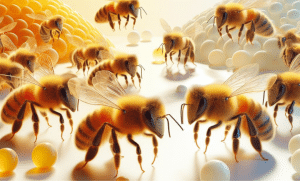
Conclusion Carniolan Honey Bee
In conclusion, the Carniolan honey bee is a remarkable and highly adaptable species that thrives in various environments. Its ability to adapt to different climatic conditions, forage patterns, and resistance to pests and diseases has made it a valuable asset to beekeepers around the world.
The Carniolan honey bee’s native range and distribution span across Europe, where it has developed unique physical traits and behavioral adaptations. Its tolerance to a wide range of temperatures and its efficient foraging patterns enable it to collect nectar and pollen effectively. This adaptability allows the Carniolan honey bee to produce enhanced honey yields, making it a preferred choice for many beekeepers.
Furthermore, the Carniolan honey bee has demonstrated improved resistance to Varroa mites and diseases compared to other honey bee races. This resistance reduces the need for chemical treatments and helps maintain the health and productivity of bee colonies.
Despite its resilience, the Carniolan honey bee still faces threats and obstacles to its survival. Varroa mites, pesticide use, habitat loss, and climate change pose significant challenges that require proactive measures and collaborative efforts.
Conservation programs and initiatives play a crucial role in safeguarding the Carniolan honey bee’s future. Beekeepers, farmers, and policymakers need to work together to implement sustainable practices that protect the bees’ habitat, promote biodiversity, and ensure the survival and well-being of the Carniolan honey bee and other pollinators.
In the realm of sustainable beekeeping, the Carniolan honey bee’s adaptability and traits make it an invaluable partner. As beekeepers continue to appreciate its efficiency and productivity, prioritizing its conservation will contribute to the overall health of our ecosystems and the sustainability of our food systems. By protecting and preserving the Carniolan honey bee, we secure a bright future for both bees and humans alike.
Role of the Carniolan Honey Bee in Sustainable Beekeeping
The Carniolan honey bee plays a pivotal role in sustainable beekeeping practices due to its remarkable adaptability and traits. Beekeepers worldwide recognize the value of these bees in maintaining healthy and productive colonies while minimizing the environmental impact.
One of the key contributions of Carniolan honey bees to sustainable beekeeping is their exceptional foraging skills and efficient use of resources. Their ability to adjust their worker population according to nectar availability allows them to maximize honey production and minimize waste. This ensures a more sustainable use of floral resources while still maintaining high honey yields.
Additionally, the Carniolan honey bee’s resistance to pests and diseases, particularly Varroa mites, is crucial for sustainable beekeeping. Varroa mites pose a significant threat to honey bee populations worldwide, leading to colony losses and decreased productivity. The Carniolan honey bee’s natural ability to resist these mites reduces the need for chemical treatments, promoting a more environmentally friendly and sustainable approach to beekeeping.
Moreover, the Carniolan honey bee’s adaptability to different climatic conditions allows for beekeeping in a wider range of environments. They can withstand cold winters and thrive in areas with variable weather patterns, making them a valuable asset for beekeepers in various regions. This adaptability reduces the risk of colony losses and ensures the continuity of pollination services, which are vital for sustainable agriculture and ecosystem health.
Overall, the Carniolan honey bee’s efficiency, resilience, and adaptability make it an essential partner in sustainable beekeeping practices. By prioritizing the conservation and management of these bees, beekeepers contribute to the preservation of biodiversity, the promotion of sustainable agriculture, and the maintenance of healthy ecosystems. Therefore, the role of the Carniolan honey bee in sustainable beekeeping is crucial for both the well-being of the bees and the sustainability of our food systems.
Future Outlook for the Carniolan Honey Bee
The future outlook for the Carniolan honey bee is promising, as beekeepers and researchers continue to recognize and appreciate their valuable traits. These bees have proven to be adaptable, resilient, and efficient, making them an essential contributor to sustainable beekeeping practices. As the demand for pollination services and honey production increases, the Carniolan honey bee’s unique characteristics make them a sought-after choice for beekeepers worldwide.
One key aspect that contributes to the future success of Carniolan honey bees is their ability to withstand various environmental conditions. Their adaptability to different climates and their capacity to thrive in both cold winters and hot summers make them well-suited for beekeeping in a wide range of regions. This adaptability ensures the availability of pollination services, which are crucial for maintaining healthy ecosystems and supporting sustainable agriculture.
Additionally, the Carniolan honey bee’s resistance to pests and diseases, particularly Varroa mites, is a valuable trait that contributes to their future viability. As beekeepers strive to reduce their dependence on chemical treatments and promote more sustainable beekeeping practices, the natural resistance of Carniolan honey bees to these pests becomes even more significant.
Furthermore, ongoing conservation efforts and breeding programs are focused on preserving the genetic diversity and promoting the traits of the Carniolan honey bee. This deliberate management of their population helps ensure the availability of these bees for future beekeepers and the continued success of sustainable beekeeping practices.
In conclusion, the future of the Carniolan honey bee looks promising. Their adaptability, resistance to pests, and conservation efforts make them a reliable and sustainable choice for beekeepers around the world. By prioritizing their conservation and management, beekeepers contribute to the preservation of biodiversity, the promotion of sustainable agriculture, and the wellbeing of our ecosystems. The Carniolan honey bee’s future continues to be bright as they play a crucial role in meeting the growing demands for pollination services and honey production.
And there we have it—the fascinating survival tactics of the hardy Apis mellifera carnica, the Carniolan honey bee. From its intricate overwintering approach to its remarkable adaptability across Central European climates, this species is a testament to the resilience of nature.
We hope you’ve gained new insights into how these diligent pollinators not only endure but also excel in diverse and challenging habitats. Your engagement is valuable to us, so we’re eager to hear your thoughts and experiences. Have you observed these remarkable bees in your local environment? What other adaptive traits do you think contribute to their success?
Please share your stories and questions in the comments below. Your input helps us all to learn and grow in our appreciation of the natural world. Let’s continue the conversation on how the Carniolan honey bee thrives in different environments.



